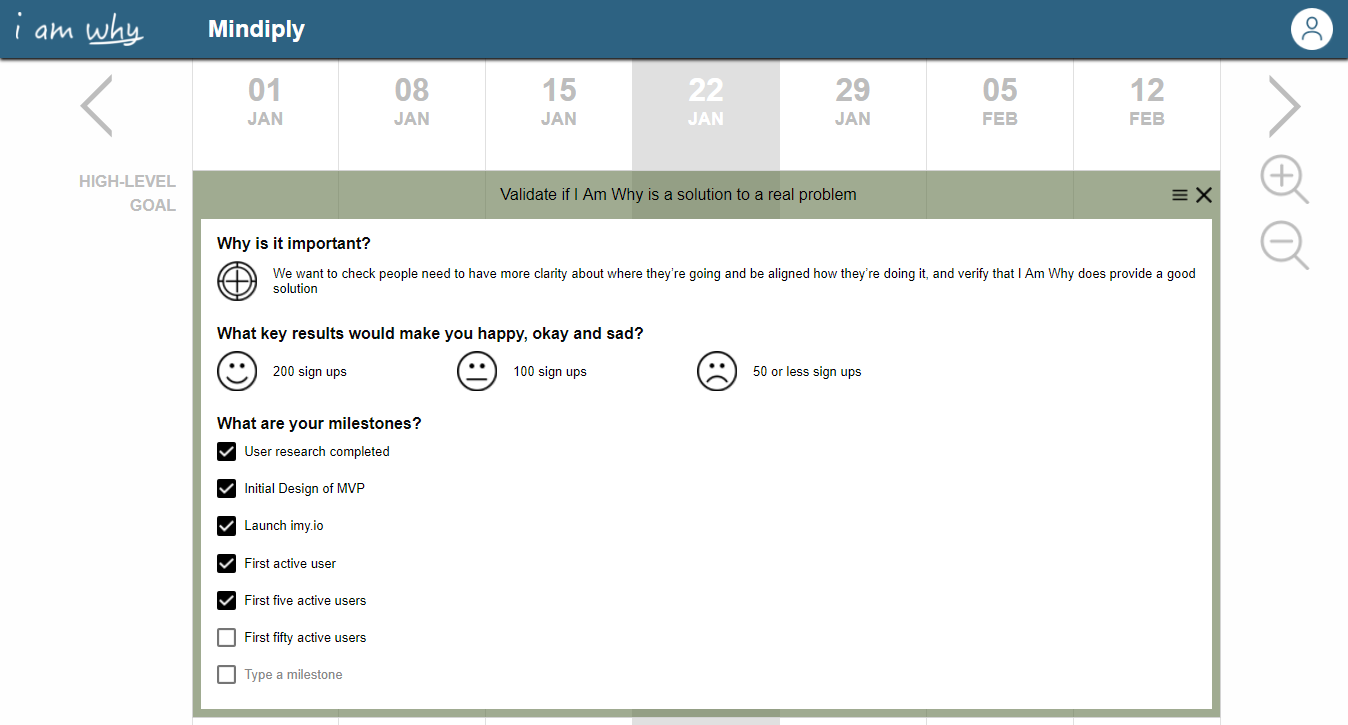
How to use the OKRs for better goal setting in your Startup
Francesco Marcatto6 Nov 17
Pick the right goal, a goal you can meet. Daniel Kahneman, the Nobel laureate and a personal hero of mine, on Desert Island Discs.
Many studies show that setting specific goals boosts people’s commitment and performances. Not any kind of goal will work though. Goals that are too vague, too narrow or focus on the wrong things can backfire and reduce motivation and performance. As Kahneman said, pick the right goal.
Setting appropriate goals is a difficult, intricate process, especially in startups. Why? There’s a lot of uncertainty, you're doing something new and may not have any experience of managing a goal setting process. As a startup, we know it ourselves!
The OKRs framework for goal setting
OKRs stands for Objectives and Key Results. It’s a framework for smart goal setting developed at Intel and popularised later by John Doerr and Google.
What does using OKRs mean in practice?
Set the objectives. Write down what's the most critical objective for your team. Be clear and direct to the point. Dare to be ambitious. "Objectives should feel somewhat uncomfortable," suggests Rick Klau from the Google Ventures team.
Define key results. "It’s not a key result if it doesn’t have a number," said former Google’s Vice President Marissa Mayer. Key results must be quantitative and measurable. For example, if you are a content publishing platform, ‘1000 readers each week’ is a better key result than ‘More readers each week’.
Track the outcomes. Are we going forward? Have we reached our goals? Setting quantitative key results helps here. When you reach your deadline they will provide a reference for evaluating your progress.
I Am Why, the smart way to use OKRs in your startup
At Mindiply, we believe that the OKRs framework is incredibly useful for startup teams.
First, you can use OKRs as a communication tool. When you make your goals transparent and concrete you reduce the risk of working at cross purposes.
Second, startups need an agile way to keep track of their progress. You need to set lots of shorter challenges and keep track of the progress. Using hard number helps you be honest about how your startup is going.
There are some nice OKRs tools out there, but in our experience, they are more oriented towards large organisations. They have many features you won’t need, and in some cases, they’re just to-do lists tools rebranded.
So we decided to develop something we would use ourselves: I Am Why. I Am Why is a modern and visual tool for strategic planning and keeping track of OKRs in your startup.
How to use the OKRs in I Am Why
Using OKRs in I Am Why is easy:
- Write your objective in the top level of the bar. Remember that you are writing for other people, will they understand?
- Write why is it important: saying ‘why’ will increase your teammates’ engagement and empower them to find creative solutions if unexpected problems arise;
- Add measurable Key Results: What numbers will make you happy, okay or sad?
In I Am Why you can also add a list of milestones or actions you need to do for reaching your objective.
Example
We are using I Am Why ourselves, and one of our current goals is to validate the problem/solution fit. So, we first create a new High-Level Objective in I Am Why: Validate if I Am Why is a solution to a real problem.
Then, we add the rationale: We want to check people need to have more clarity about where they’re going and be aligned how they’re doing it, and verify that I Am Why does provide a good solution. A bit wordy, but this way we are sure we all will understand it even in a couple of weeks.
After that, we define some numeric key results: our measurable outcome will be the number of sign ups to I Am Why. Two hundred sign-ups will make us very very happy, 100 sign-ups will be an acceptable result, and with 50 or fewer sign-ups we should go back and review our strategy.

I Am Why is made by a startup for startups and small organisations. We know what problems you face, we face them too! So we made something tailored for you, the essentials to set a direction and check you're always on route.
Curious to know more about how to set better goals with I Am Why? Read more about it here!







